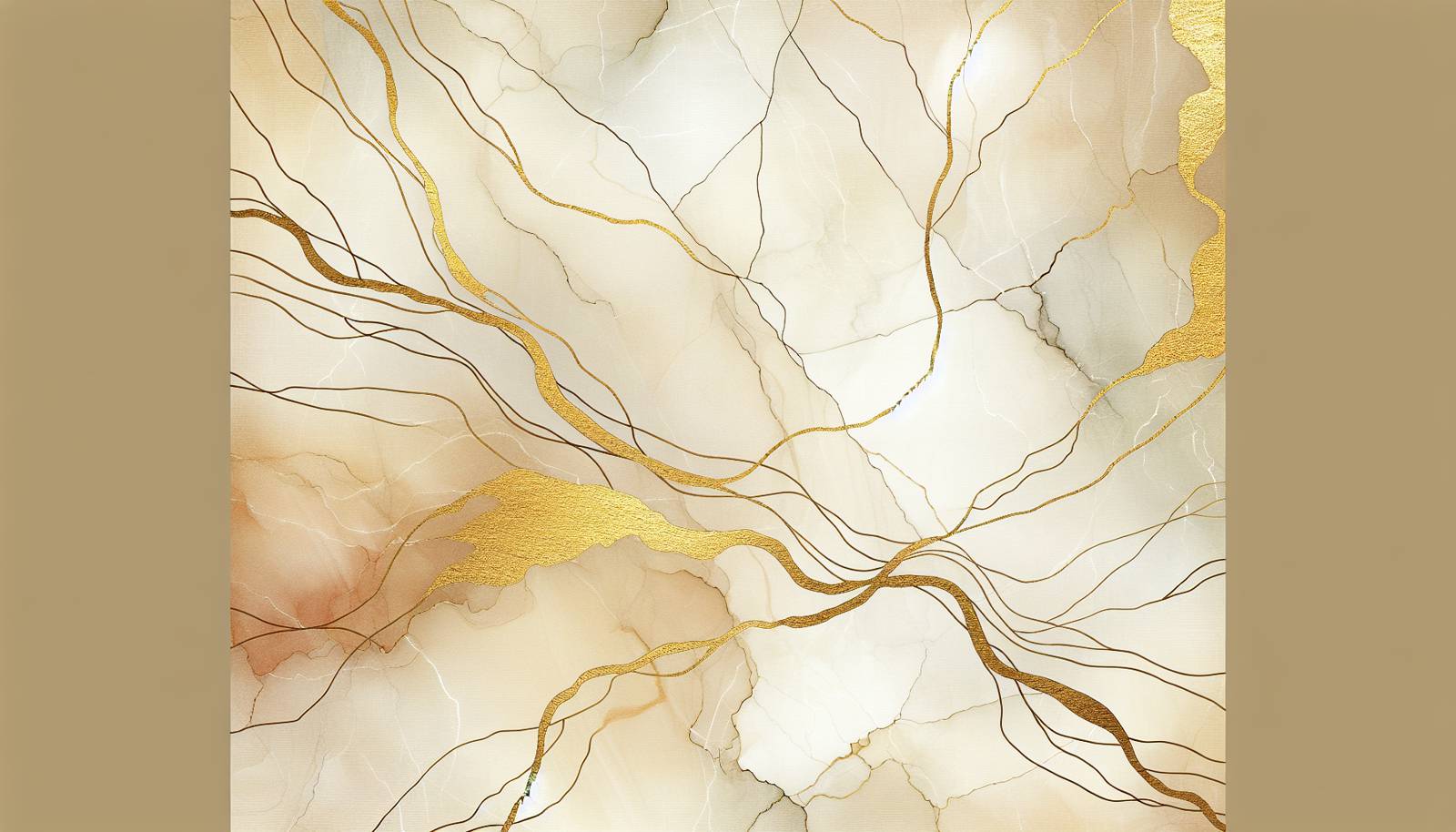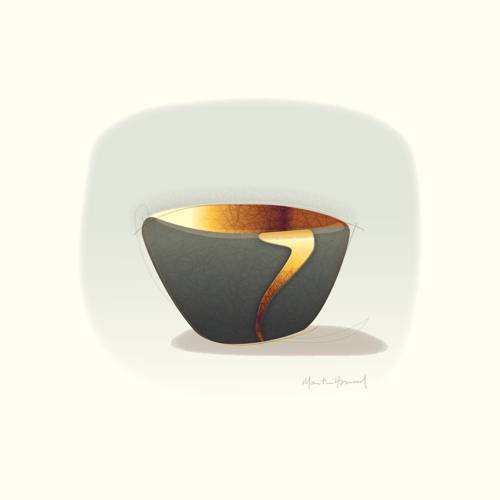
FAQ About The Impact of Kintsugi on Modern Craft and Philosophy

What is Kintsugi and how does it work?
Kintsugi is a traditional Japanese art that involves repairing broken pottery by mending the areas of breakage with a special lacquer dusted with powdered gold, silver, or platinum. This technique is not just about repairing an object; it's about creating an object that gains beauty from its imperfections. The process typically involves combining the broken pieces with resin or lacquer and then coating the seam with powdered gold or another metallic finish, transforming the repaired item into a unique piece of art.

How has Kintsugi influenced modern craft and design?
Kintsugi has significantly influenced modern craft and design by promoting the idea that imperfections and repairs can add to the beauty and value of an object. This philosophy encourages makers to embrace flaws rather than attempt to hide them, leading to more authentic and thoughtful creations. In various crafts and designs, this can be seen in the intentional use of visible repairs and a focus on sustainability and resourcefulness.

What is the philosophical significance of Kintsugi?
Kintsugi embodies several Japanese philosophies, notably 'wabi-sabi,' which finds beauty in the imperfect, incomplete, and impermanent aspects of life. It also embraces resilience and transformation, highlighting how breakage and repair can contribute to the history and character of an object or person. This has resonated particularly in modern philosophies focusing on mental health, personal growth, and acceptance of imperfections.

In what way does Kintsugi promote sustainability?
Kintsugi promotes sustainability by encouraging the repair and reuse of broken items instead of discarding them. By valuing the longevity and history of an object, it challenges the throwaway culture prevalent in modern society. This approach not only reduces waste but also emphasizes the importance of maintaining and valuing the resources and labor embedded within the objects we use.

Can Kintsugi be applied to objects other than pottery?
While traditional Kintsugi is specific to pottery, its philosophy can be applied to various forms of art and objects. Many artists and craftspeople have drawn inspiration from Kintsugi, using its principles to repair or transform textiles, wood, and even metaphorically in digital designs and personal projects. The central idea of using visible repairs to enhance an object’s story can be universally applied across different materials.

What materials are necessary for traditional Kintsugi?
Traditional Kintsugi requires several materials including lacquer, which acts as the adhesive, and powdered metal, such as gold, silver, or platinum, to highlight the repaired areas. Additional materials might include clay or other fillers to stabilize the piece, and polishing tools to smooth and finish the repaired areas for aesthetic appeal.

How does Kintsugi relate to the concept of ‘wabi-sabi’?
Kintsugi is closely related to the concept of 'wabi-sabi,' which emphasizes finding beauty in imperfection and transience. Wabi-sabi appreciates the natural cycles of growth and decay, seeing charm and value in things that are aging or flawed. Kintsugi physically embodies this by turning the imperfections and history of broken pottery into visually celebrated aspects of an artwork.

Are there modern artists who specialize in Kintsugi?
Yes, several contemporary artists and ceramists specialize in Kintsugi, either through practicing traditional techniques or creating modern reinterpretations of the method. These artists often emphasize sustainability and the narrative of objects, showcasing how Kintsugi can add new dimensions to the art of repair. Their work sometimes crosses the boundaries between craft and fine art.

Is Kintsugi limited to gold-embellished repairs?
While gold is traditionally used in Kintsugi to highlight repairs, other metals like silver and platinum can also be used, and some modern iterations use non-metallic pigments for artistic variety. The emphasis is on creating a visually striking contrast that celebrates the repair rather than camouflaging it, allowing for creative exploration with different materials and finishes.

How does Kintsugi inspire personal growth and mental health practices?
Kintsugi inspires personal growth and mental health practices by serving as a powerful metaphor for resilience, healing, and embracing one's own imperfections. Just as broken pottery is mended with gold, individuals can learn to view their struggles and scars as valuable parts of their identity, fostering self-acceptance and a positive outlook on personal evolution.

What is the history behind the development of Kintsugi?
The history of Kintsugi dates back to the 15th century when it is believed to have started in Japan. The legend tells of a Japanese shogun who sent his damaged Chinese tea bowl back for repairs, and when it returned with metal staples, it inspired Japanese artisans to develop a more aesthetically pleasing method of repair, leading to the creation of Kintsugi.

Can anyone learn Kintsugi?
Yes, Kintsugi can be learned by anyone with an interest in crafts and patience for meticulous work. There are workshops, online courses, and DIY kits available that teach the basic principles and techniques of Kintsugi. While mastering the traditional methods requires practice, simpler versions can be quickly learned for personal projects or artistic expression.

How is Kintsugi perceived in contemporary Western culture?
In contemporary Western culture, Kintsugi has gained popularity not only as an artistic technique but also as a lifestyle philosophy. Its emphasis on sustainability, uniqueness, and embracing flaws resonates with current cultural shifts towards mindfulness and authentic living. As such, it is both admired in craft communities and incorporated into broader discussions of design and self-care.

What are the challenges of practicing traditional Kintsugi?
Practicing traditional Kintsugi involves challenges such as sourcing authentic materials like urushi lacquer, which requires careful handling due to its potential for causing allergic reactions. Additionally, the process is time-intensive, demanding patience and precision to achieve a high-quality and durable repair. Mastering these techniques requires dedication and practice.

Are there alternatives to traditional Kintsugi materials?
Modern practitioners often use alternative materials to traditional Kintsugi for reasons of accessibility and cost. Epoxy resins are commonly used in place of urushi lacquer, and metallic powders or paints may substitute the precious metals used for highlighting. These alternatives can make Kintsugi more accessible to hobbyists while still embracing the art’s fundamental principles.

How has Kintsugi been incorporated into education or workshops?
Kintsugi is increasingly incorporated into educational contexts and workshops, often as part of programs focusing on art, sustainability, or wellness. Through hands-on practice, participants not only learn a unique craft but engage with themes of resilience, mindfulness, and the aesthetics of imperfection. These sessions encourage reflection on how these principles apply to their own lives.

Can Kintsugi be considered a form of meditation?
Kintsugi can indeed be considered a form of meditation, as the meticulous and methodical process encourages a focused and calm state of mind. Practitioners often find the patience required in the repair process parallels meditative practices, allowing them to disconnect from everyday stressors and connect with the rhythmic and reflective nature of the art.

What future trends might we see in Kintsugi-inspired designs?
Future trends in Kintsugi-inspired designs may include its principles further integrating with digital art, fashion, and home decor, where visible repairs and sustainability are already valued. The philosophy of celebrating imperfection complements movements in upcycling and zero-waste living, positioning Kintsugi's aesthetics and values at the forefront of innovative design.

How do contemporary designers use Kintsugi in sustainable fashion?
Contemporary designers use Kintsugi in sustainable fashion by creating garments and accessories with visible mending and patchwork techniques that echo the art's philosophy. This not only reduces waste by reusing materials but also produces unique, individualized items that highlight the beauty of repair and enduring craftsmanship in a consumer-driven industry.

Are there any notable exhibitions or museums featuring Kintsugi?
Yes, many art museums and cultural exhibitions around the world feature Kintsugi pieces either as permanent collections or special exhibitions. These displays often highlight both historical and contemporary interpretations of Kintsugi, offering visitors insight into its craftsmanship and underlying philosophies as part of a broader appreciation of Japanese art and culture.
